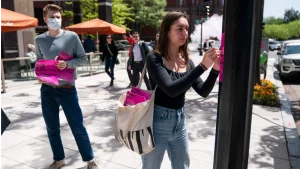Want to solve the student debt crisis? Restructure interest rates
August 30, 2022
The Hill Op-Ed
By Javaid Siddiqi, President & CEO of The Hunt Institute
Read the article online here.

More than 43 million Americans owe nearly $1.8 trillion in student loan debt, and this is only expected to increase. While the debate has raged on about what the Biden administration (and/or Congress) should do regarding student loan cancellation, little has been done to actually solve the issues that created the crisis in the first place.
One way to simultaneously help Americans currently struggling with student loan debt and fix the financial systems responsible for the crisis is to restructure student loan interest rates.
The COVID-19 pandemic elevated discussions of student loan cancellation to the forefront of American discourse. Proponents argue debt forgiveness would mitigate the harmful effects student debt has on the economy, such as reduced homeownership rates, and would improve income inequality for students of color. Opponents argue partial forgiveness would do little to boost economic growth and forgiveness, in general, would not address the underlying drivers of increasing student debt and would disproportionately benefit high-income households.
Regardless of where you stand, there seems to be little compromise in sight. Restructuring student loan interest rates can be that common ground.
Interest rates are at the heart of the student loan debt crisis, as interest begins to accrue as soon as a loan is disbursed and continues during periods of deferment. This interest continues to compound, and over time leaves borrowers with huge balances and monthly payments that only cover current interest balances. Any unpaid interest capitalizes and is added to the principal of the loan, increasing the overall cost.
Sixty-three percent of borrowers who made student loan payments during the COVID-19 pandemic still owed more than they originally borrowed, despite interest rates being set at zero percent and payments being paused. If we are going to fix the student loan debt crisis, we must first deal with the reality that interest rates are only going to make the student debt problem worse without action.
Subsidized loans were designed to avoid high interest rate costs, as the government would cover the cost of interest while a student was enrolled. However, first-year undergraduates can only receive $3,500 in subsidized loans, a mere third of the average cost of public in-state tuition ($10,338).
This leaves many students, including graduate students, reliant on unsubsidized loans, which accrue interest from the time they are disbursed until paid, regardless of enrollment, deferment and grace periods.
We need to address the idea that students are paying interest on their loans before finishing their degrees/credentials. Nowhere else in our financial system does someone start paying interest on something before receiving the goods for which they took the loan. Take a mortgage — get to live in the house. Take a car note — get to drive the car.
Students do not see a return on their investment until they are able to be gainfully employed after finishing their degree. Even those students working full- or part-time during their time in college do not benefit from their degree/credential until after completion of the program.
Why should they have to pay interest before then?
One way to solve the interest rate issue and find a compromise: Let borrowers refinance their loans to zero percent interest or eliminate interest rates altogether. There are glimmers of bipartisan support for this idea.
In August of 2021, Sen. Rubio (R-Fla.) reintroduced his Leveraging Opportunities for Americans Now (LOAN) Act which would eliminate interest rates and replace them with a one-time, non-compounding fee. Similarly, In June of 2022, Sen. Sheldon Whitehouse (D-R.I.) introduced the Zero-Percent Student Loan Refinancing Act, which would allow Americans to refinance their federal student loans at a zero percent interest rate.
A zero percent interest rate would address many of the concerns both sides express with full student loan debt forgiveness. It would allow borrowers to better plan their finances without overheating the economy, as full forgiveness could. It would start to address a main driver of debt increase (i.e., interest rates), and it would lessen the financial burden on low-income individuals without disproportionately benefiting those with loans for graduate and professional school. This is not to mention the numerous unforeseen mental and social benefits borrowers would see by feeling a sense of relief.
The Biden administration has not been as bold to suggest a zero percent interest rate yet, but recently they have suggested changes to keep unpaid interest from being capitalized upon the principal of the loan in certain circumstances. This narrower approach would save borrowers millions but still does not fix the ballooning debt crisis.
Regardless of what the administration and Congress decide, it is clear they need to do something — and do it soon. Multiple generations are now struggling under the weight of student loan debt and growing balances. Students who are making payments are barely covering interest costs and are seeing principal balances continue to increase. Without action, this problem will only grow.
A key part of the American dream is the idea that if you work hard, a better future is possible, but the student debt crisis is clouding that dream for millions of Americans. Many borrowers feel underwater, fearful of their financial future while others are anxiously awaiting a decision from the Biden administration as their last hope.
There is no perfect answer to the crisis, and it will take more than one policy solution to fix it. However, restructuring interest rates — or, better yet, eliminating interest altogether — would provide the light at the end of the tunnel so many Americans are seeking, and it would move us closer to making that American dream a reality.
Javaid Siddiqi, Ph.D. is president & CEO of The Hunt Institute.
Follow Javaid on Twitter.


